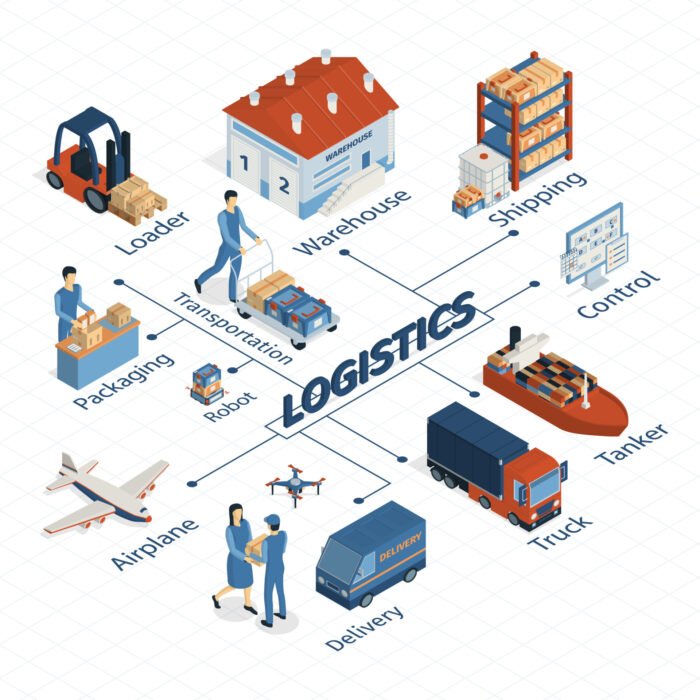
India’s logistics industry is undergoing a revolutionary transformation in 2025, driven by innovative technologies, the development of multimodal infrastructure, and ambitious government policies. As a rapidly developing economy in the world, India is taking strategic steps to improve its supply chain efficiency, lower its logistics expenditure, and position the industry as globally competitive. This blog discusses the top trends and government initiatives that are transforming India‘s logistics industry in 2025.

1. Digitization and Smart Logistics Solutions
The logistics industry in India is embracing digital transformation at a record rate. In 2025, technologies such as Artificial Intelligence (AI), Machine Learning (ML), Internet of Things (IoT), and blockchain are being incorporated into supply chains to allow real-time visibility, predictive analytics, and smooth coordination among parties.
Businesses are spending money on logistics technology platforms to oversee warehousing, fleet monitoring, stock forecasting, and last-mile delivery. Cloud infrastructure and digital freight matching technologies are enhancing the productivity of B2B logistics services, particularly in e-commerce and retail sectors.
2. Multimodal Transport and Infrastructure Upgrades
One of the biggest trends in 2025 is the development of multimodal logistics hubs joining road, rail, air, and inland waterways. This multi-modal approach saves transit time, uses less fuel, and decongests highways. The Indian government is investing heavily in Dedicated Freight Corridors (DFCs) and logistics parks throughout the nation to enable the effortless movement of cargo.
Eastern and Western DFCs are already in operation, and new corridors such as the North-South and East-West are being proposed under the PM Gati Shakti initiative. These corridors are important for compressing delivery times and improving the reliability of freight services.
3. Gati Shakti National Master Plan: A Game-Changer
The PM Gati Shakti National Master Plan, which was rolled out in late 2021, remains a cornerstone in 2025. The plan brings together 16 ministries on a centralized platform to enable integrated development of infrastructure, sharing of data, and effective project implementation.
Gati Shakti intends to bring down the logistics expense of 13-14% of GDP to below 8%, making India a global standard-bearer. It also facilitates the establishment of Unified Logistics Interface Platforms (ULIP) to enable real-time information of cargo movement and ease compliance pressures on logistics players.
4. Green and Sustainable Logistics focus
With increased sensitivity towards the environment, green logistics has become the buzzword in 2025. The public and private sectors are joining hands to minimize the carbon footprint of logistics activities. This involves the use of electric vehicles (EVs) for last-mile delivery, minimizing route miles through AI-based route planning, and utilizing renewable energy at warehouses.
The National Logistics Policy (NLP), initiated in 2022, also focuses on sustainability through encouraging eco-friendly supply chains, rewarding cleaner fuel options, and promoting mode shift from road to rail and waterways.
5. MSME Inclusion and Skill Development
In 2025, the Indian government is prioritizing MSME participation in the logistics ecosystem through easier financing options, digital onboarding, and inclusion in e-marketplaces like ONDC (Open Network for Digital Commerce). This helps small transporters and warehouse owners to become part of the formal economy.
Additionally, there’s added emphasis on skill development and training programs through schemes such as Skill India and PMKVY, which are empowering logistics professionals with digital, operational, and safety skills.
Conclusion
India’s logistics industry in 2025 is at the crossroads of innovation, policy change, and infrastructure expansion. With the government strongly supporting reform through Gati Shakti, National Logistics Policy, and huge investments in multimodal connectivity, the nation is likely to develop into a global logistics hub.
For logistics companies, the moment is now to modernize, digitize, and adapt their businesses to these trends. Adopting supply chain optimization, digital freight systems, and green practices will be crucial to remaining competitive in this changing environment.

